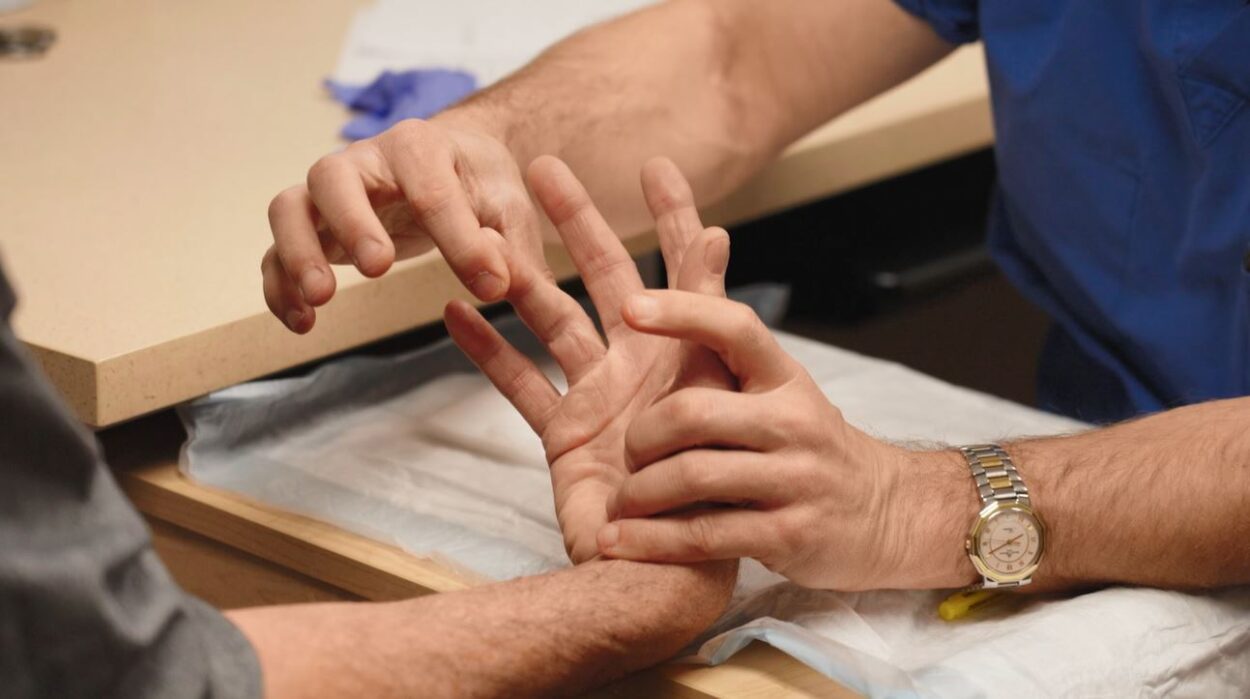
What is Dupuytren’s Contracture?
Dupuytren’s Contracture is a condition where the connective tissue under the skin of the palm thickens and tightens. This can cause one or more fingers to bend towards the palm, making it difficult to fully straighten the affected fingers. The condition progresses slowly and can affect one or both hands.
Causes of Dupuytren’s Contracture
The exact cause of Dupuytren’s Contracture is unknown, but several factors are believed to contribute to its development:
- Genetics: There is a strong hereditary component, meaning it often runs in families.
- Biochemical Factors: Changes in certain enzymes and proteins within the hand’s connective tissue can lead to the thickening and tightening characteristic of the condition.
- Other Health Conditions: People with diabetes or epilepsy are at a higher risk.
- Lifestyle Factors: Smoking and excessive alcohol consumption are also associated with an increased risk.
Who is at Risk for Dupuytren’s Contracture?
Certain factors can increase the likelihood of developing Dupuytren’s Contracture:
- Age: It most commonly affects people over the age of 50.
- Gender: Men are more likely to develop this condition than women.
- Ancestry: It is more common in people of Northern European descent.
- Family History: Having a family member with Dupuytren’s Contracture significantly increases your risk.
Symptoms of Dupuytren’s Contracture
The symptoms of Dupuytren’s Contracture typically develop gradually and may include:
- Nodules: Initially, small sensitive lumps form in the palm. Usually with time, the pain subsides and goes away.
- Cords: Nodules may thicken and contract creating tough bands of tissue under the skin inside the fingers and in the palm.
- Finger Contracture: Most commonly the ring and little finger are affected, curling in towards the palm and cannot be fully straightened.
Diagnosing Dupuytren’s Contracture
Diagnosis of Dupuytren’s Contracture usually involves a physical examination. Your orthopedic surgeon will:
- Examine Your Hands: Checking for thickened tissue and the ability to move your fingers.
- Range of Motion Tests: Evaluating how well you can straighten and bend your fingers.
- Medical History: Reviewing your medical history and family history to identify risk factors.
Treatment Options for Dupuytren’s Contracture
Treatment for Dupuytren’s Contracture depends on the severity of the condition and its impact on hand function. Options include:
- Surgery: For severe cases, surgical intervention may be necessary to remove the affected tissue and restore finger movement.
- Steroid Injections: A steroid injection may help to reduce inflammation and pain. In some cases, it can prevent the condition from worsening.
- Needling (Percutaneous Needle Aponeurotomy): A minimally invasive procedure to break the cords of tissue.
- Enzyme Injections: Collagenase injections can help break down the thickened tissue. Hand and upper extremity orthopedic surgeon, Dr. James Verheyden, explains his innovative simple injection technique for treating Dupuytren’s contracture. This approach offers a more effective, less costly solution with faster recovery times for patients.
When to Call Your Orthopedic Surgeon
You should contact your provider if you notice any of the following:
- Progressive Finger Contracture: Increasing difficulty in straightening one or more fingers.
- Pain or Discomfort: Significant pain or discomfort in your hand or fingers.
- Impact on Daily Activities: Difficulty performing daily tasks due to limited hand function.
- Rapid Progression: If the condition appears to be progressing quickly.
Early intervention can help manage symptoms and improve outcomes, so it is important to seek medical advice if you have concerns about Dupuytren’s Contracture.
Stay informed about upcoming webinars and events, and gain valuable insights on leading a healthy, pain-free life from our experts by subscribing to our monthly newsletter. Click the button below to join!





